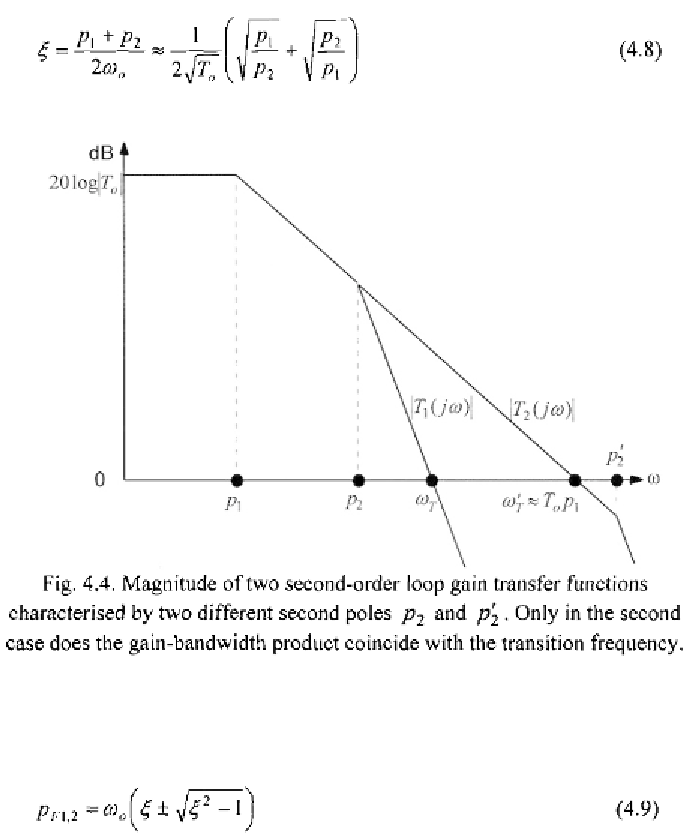Environmental Engineering Reference
In-Depth Information
The last identity in (4.6) is an alternative expression of
with
and
as the closed-loop amplifier poles given by
These poles are either real or complex conjugate pairs, depending on the
value of
(or parameter
Q
equal to
sometimes used instead of and
.
The location of the closed-loop poles, as the DC
loop-gain is increased from zero, is illustrated in Fig. 4.5 showing that a
second-order feedback system is absolutely stable. However, the design of a
second-order system having a specific and well-defined frequency and
transient response requires careful consideration of where the poles are to be
located.
called the
pole Q
factor
)







